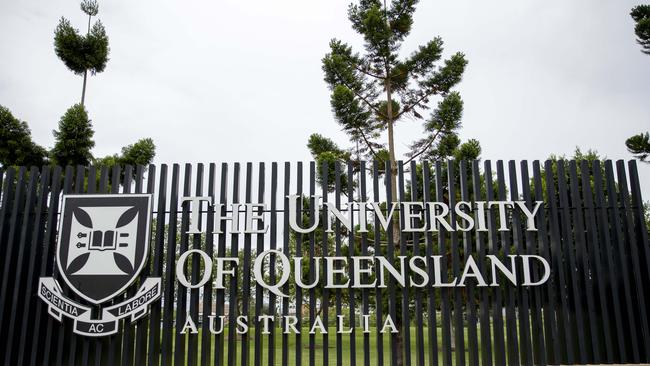‘That’s science’: pain of failure in search of Covid answers
It was a decision made under pressure. Scientists at the University of Queensland were working on perfecting their molecular clamp vaccine technology when the coronavirus outbreak struck.

It was a decision made under pressure. Scientists at the University of Queensland were working early in the year on perfecting their molecular clamp vaccine technology when it became apparent that the coronavirus outbreak that was ravaging Wuhan was sweeping across the world.
The molecular clamp — a prized invention of the UQ team that is able to uniquely stabilise proteins used in vaccines — had been planned to be employed in an influenza vaccine. But in the weeks in the lead up to the declaration of a pandemic, the scientists rapidly switched to using the clamp to formulate a COVID-19 vaccine.
As cases began to appear in Australia, scientists had to quickly choose from a suite of protein fragments that would be added to the coronavirus’s spike protein in the molecular clamp to stabilise it. They settled on a pair that produced the best results: two fragments of a protein found in the human immunodeficiency virus (HIV) that would help lock the SARS-CoV-2 virus into shape.
“The reality was that we tested a number of different constructs in the early days of development, and the HIV fragments were providing the greatest stability,” says Paul Young, head of UQ’s School of Chemistry and Molecular Sciences and a key member of the team that created the vaccine.
The scientists engineered the protein fragments to remove HIV antibody binding sites, and they proceeded with confidence that no human volunteers would develop a reaction to the protein fragments. They were wrong.
Soon after the 216 volunteers who were taking part in the phase 1 trials of the UQ vaccine candidate were injected with their second jab, all of them developed antibodies to the HIV protein fragments. Ultra-sensitive HIV diagnostic assay testing detected the antibodies, giving a positive result which was later ruled negative for HIV.
The volunteers had been informed prior to giving consent to the trial that developing antibodies to HIV was a potential risk. Paul Griffin, the principal investigator with Nucleus Network that was running the clinical trial, was tasked with explaining to the volunteers that the scenario that had been thought to be so unlikely had in fact played out. “It was something that I guess probably wasn’t ideal to see at that point in time,” Professor Griffin says. “But it had already been flagged as a possibility. So it wasn’t something that was a complete surprise.”
Professor Griffin assured the volunteers there was no risk whatsoever that they had been infected with HIV, and the issue was one of cross-reactivity in the tests. The volunteers were relaxed and all agreed to continue with the trial.
The federal government was also relatively relaxed about the unfolding situation. But in late July, it had been warned by Adelaide vaccine scientist Nikolai Petrovsky that using HIV protein fragments in the molecular clamp was inadvisable. “No one wanted to listen,” Professor Petrovsky says. “We’ve been trying to warn people from day one.”
Throughout spring, talks took place between the UQ team and the pathology labs in charge of the algorithms that control HIV assay tests, to see whether a solution could be devised in which the volunteers would no longer trigger positive results. A solution could not be found without radically altering testing methods, which was impossible.
The situation came to a head this week as the decision loomed as to whether to proceed with phase 3 trials. The UQ team and manufacturer CSL agreed with the federal government that the situation was untenable.
“We worked with HIV specialists and laboratory specialists to map out a different way of screening for HIV, whether it was doable with the tests that were available,” says Russell Basser, senior vice-president of research and development with CSL’s vaccine arm Seqirus.
“It seemed to get harder and harder the more we looked at it. Combined with the fact that the antibody levels were not declining particularly rapidly, we felt that the burden was probably too great. We felt that public health confidence needed to be maintained, that there were other (vaccine) options and we just weren’t in a position to continue.”
The fact that there are almost 50 other vaccines in clinical trials around the world is of some comfort to the scientists involved. But the sting of disappointment is nevertheless intense.
“I think there’s probably a single word that sums it up: devastated,” says Professor Young. “For the last 11 months we’ve been living and breathing this particular project, not only the members of the team but their families have all been involved. So it’s challenging times, but that’s science.”




To join the conversation, please log in. Don't have an account? Register
Join the conversation, you are commenting as Logout